Ancient temples, epic myths, and lively streets after dark—Athens turned out to be much more than a quick stopover. Despite what some say about it being hot or hectic, we found Athens full of memorable moments and learning opportunities. With a bit of planning (and a daily break during the heat), Athens became a highlight of our time in Greece.
To beat the heat, explore early in the day, take a break back at your hotel in the afternoon, then head out again in the cooler evening hours. This rhythm keeps energy high (especially for kids!) and makes space for both adventure and downtime.
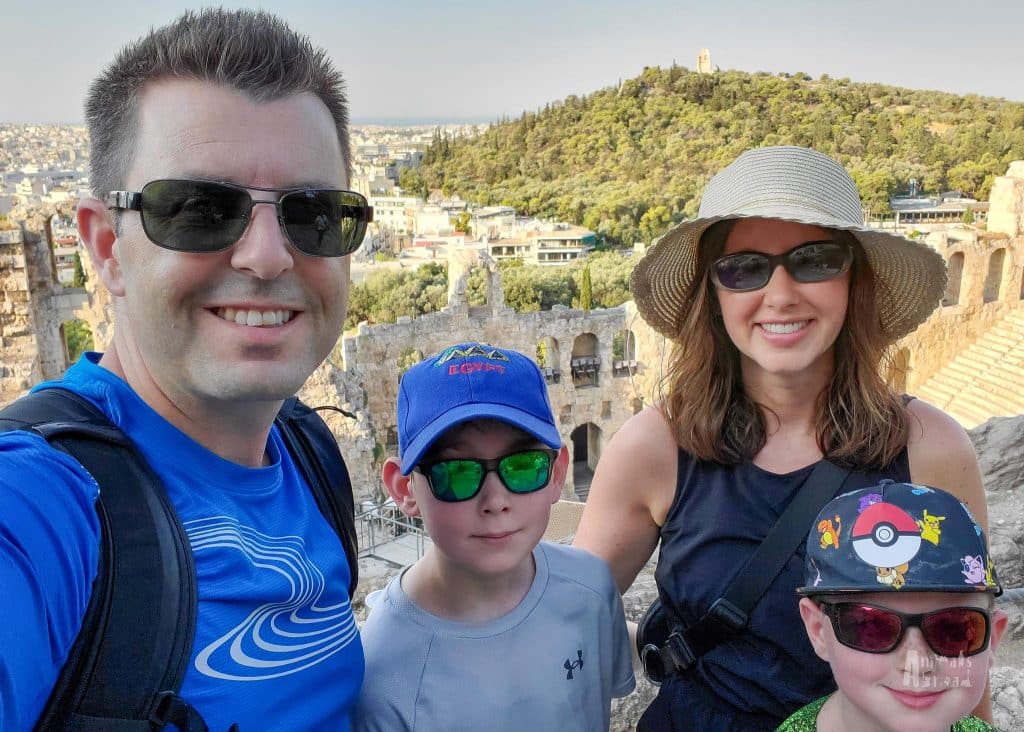
Getting Kids Into Greek Mythology
To build excitement before we arrived, we introduced our boys to the Percy Jackson series—an adventure series where the main character discovers he’s a demigod and is sent on quests involving Greek gods, heroes, and monsters. These stories helped bring ancient temples to life during our visit.
Worldschooling Tip
Let your kids research a temple and the God it represents, and be the “tour guide” when you visit. Our boys loved sharing facts from their books and making real-world connections.
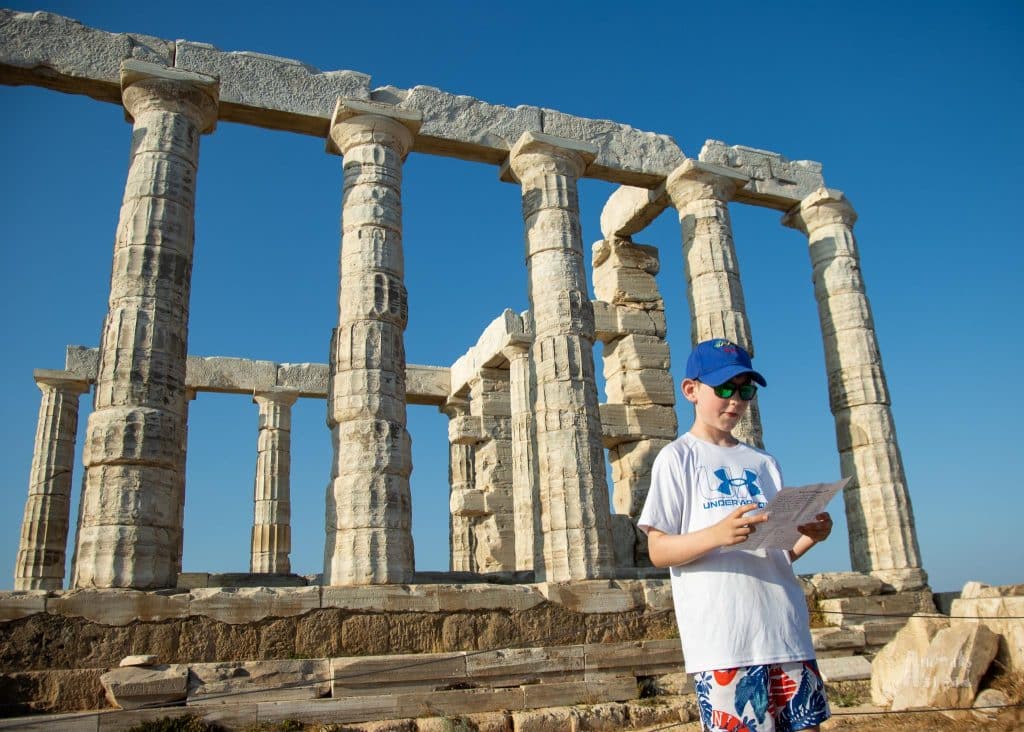
Day 1: Poseidon’s Temple & Aegean Sunsets
Kick off your time in Athens with a mix of mythology, ocean views, and a bit of beach time. One of the most beautiful day trips from the city is Cape Sounion, home to the ancient Temple of Poseidon, perched high on the cliffs above the Aegean Sea.
If your kids are into Greek myths (or Percy Jackson fans), this is the ultimate place to start. Our boys were especially eager to visit the temple of Poseidon—the powerful god of the sea and a key figure in the series.
Rent a car and drive the scenic coastal route from Athens, stopping for a swim and a seaside lunch along the way. Arrive at the temple in the late afternoon, when the temperatures are cooler. The golden-hour light on the marble columns is spectacular, and sunset here is unforgettable.
For more tips on a day trip to Cape Sounion, see our post: Getting into Greek Mythology: Visiting Poseidon’s Temple
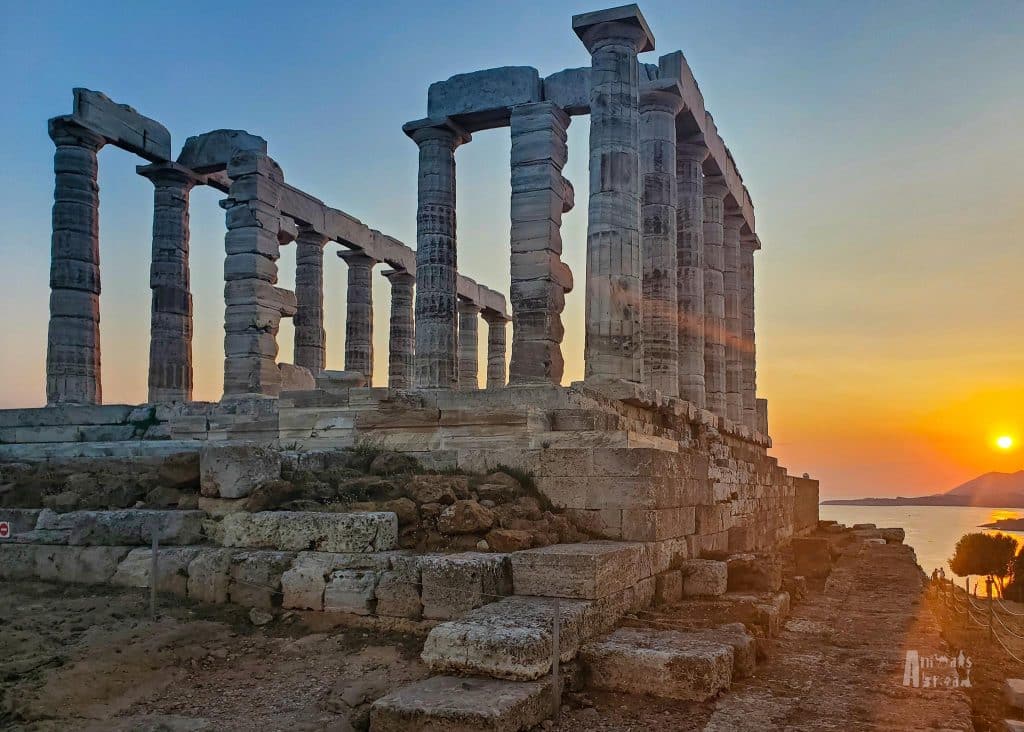
Day 2: Ancient Athens & the Plaka
Jackson had a long list of temples he wanted to see, based on his favourite gods from the books. Some—like Apollo or Hades—weren’t nearby or didn’t have much remaining. But others, like Zeus, Hephaestus, and Aphrodite, were right in the heart of the city.
We mapped out a route that made the most of our time and avoided backtracking—this order worked well for us and kept things moving at a comfortable pace.
Hadrian’s Library
Just off Monastiraki Square, this ruin includes tall columns and ancient walls from the library Emperor Hadrian built in 132 AD. It’s a quick stop, but a good glimpse into Roman Athens.
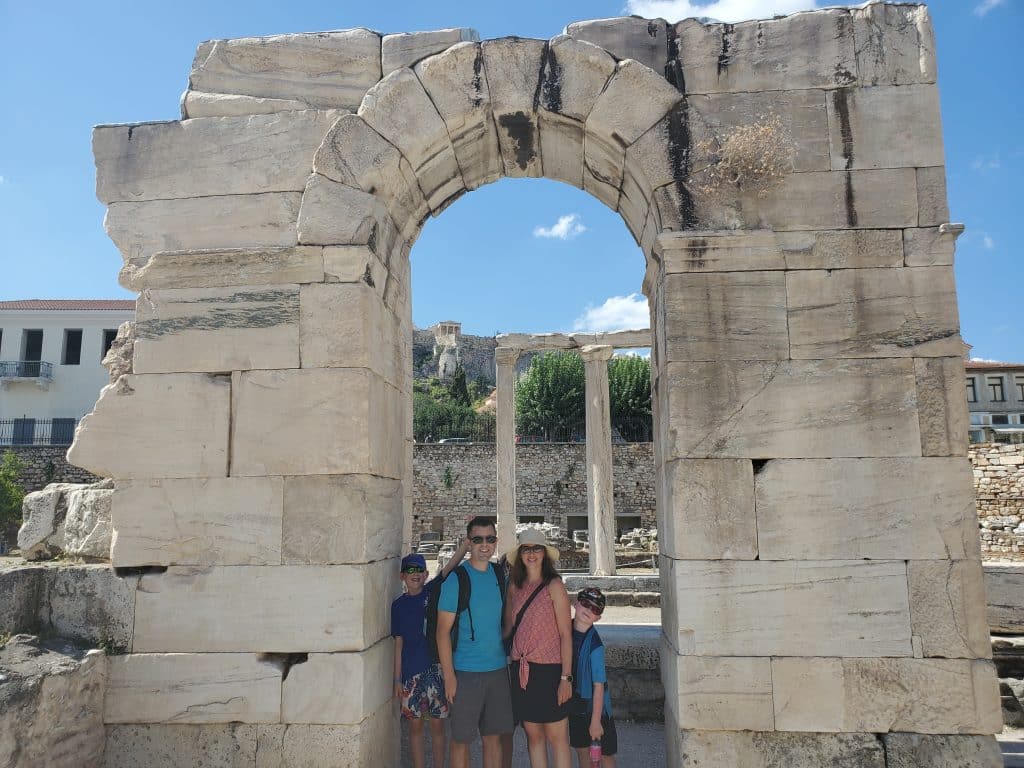
Ancient Agora
Once the bustling heart of public life in Athens, the Ancient Agora was home to temples, shops, and gathering spaces. Today, much of it lies in ruin, but walking among the crumbling stone pathways still feels immersive. Many of the ruins are roped off, but you can easily imagine what once stood there with a little help.
The standout is the Temple of Hephaestus—one of the best-preserved ancient temples in all of Greece, its sturdy columns still standing tall. Just outside the Agora, the Temple of Aphrodite is smaller and more fragmented, but it is easy to find and worth the detour.
Tip: Many of the temples are in ruins, so consider booking a guide or downloading an audio tour to bring the stories to life.
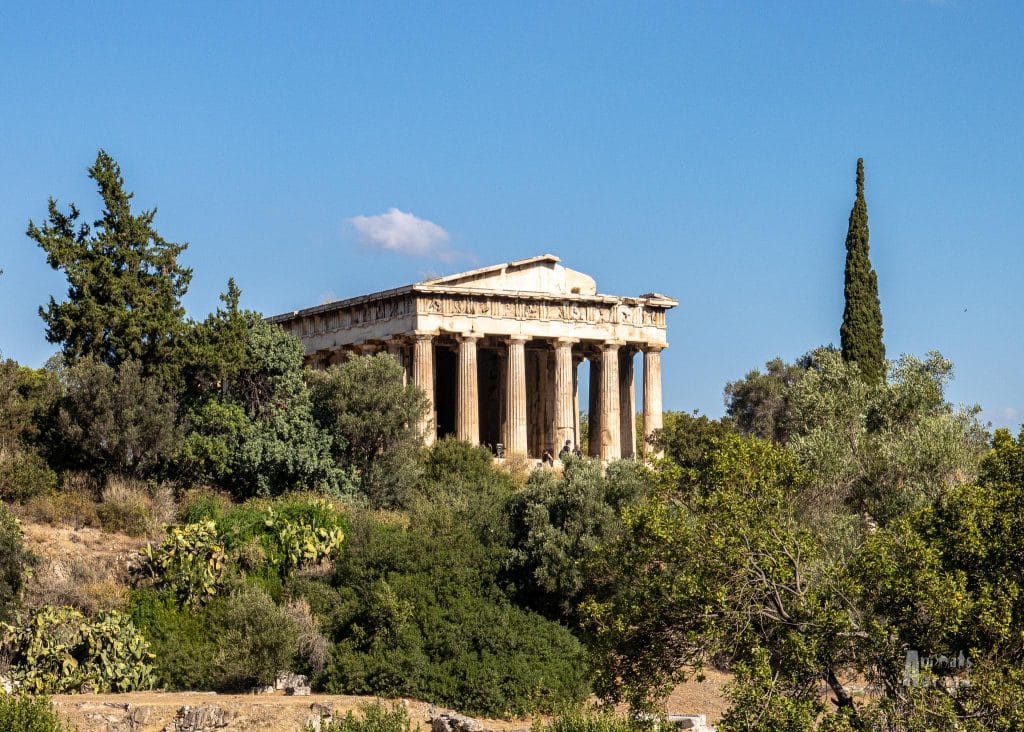
Temple of Olympian Zeus
Dedicated to the king of the Olympian gods, the Temple of Zeus was once the largest temple in all of Greece, fitting for Zeus’s role as ruler of the skies. Only 15 of the original 104 columns remain, but they’re huge. You can walk around the fenced site or simply view it from the sidewalk. Either way, the scale gives you a sense of the scale and grandeur this temple once held.
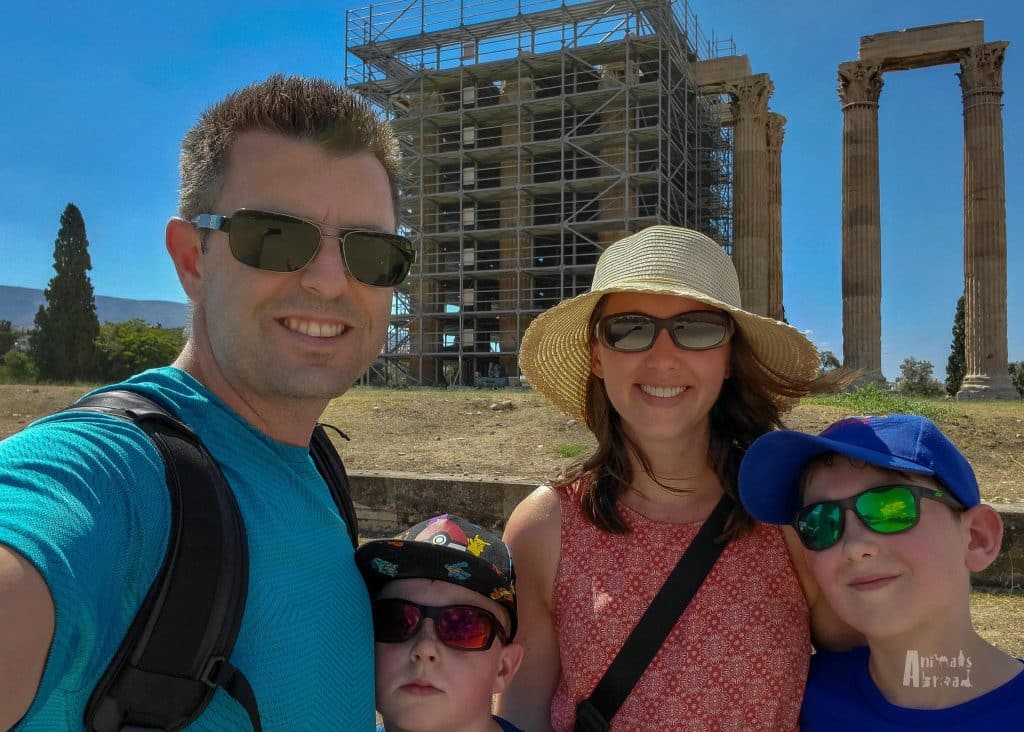
Hadrian’s Arch
Just steps away from the Temple of Zeus, Hadrian’s Arch is a striking marble gateway that once marked the boundary between ancient Athens and the Roman city. Built in 131 AD to honour Emperor Hadrian, it’s a quick stop, but worth a look for its impressive structure and detail.
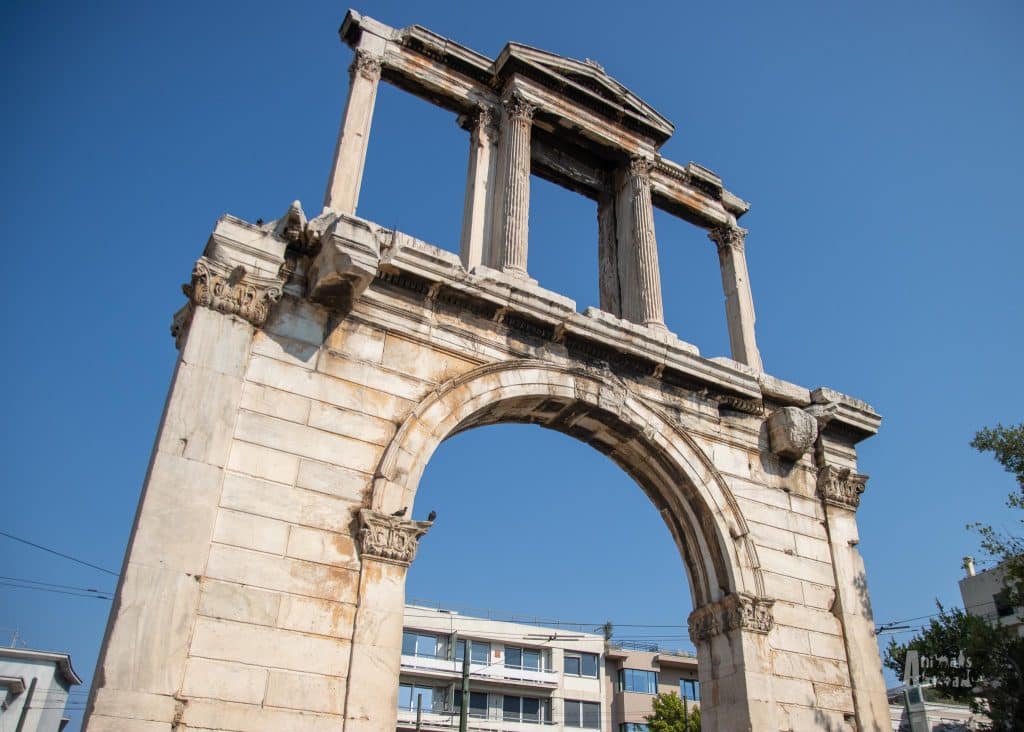
Panathenaic Stadium
This horseshoe-shaped stadium, made entirely of white marble, hosted the first modern Olympic Games in 1896. You can run a lap on the track, climb the steep stands, and visit the torch exhibit underneath.
Tip: It’s a bit of a walk from central Athens—consider taking a taxi if the day is hot or the kids are tired.
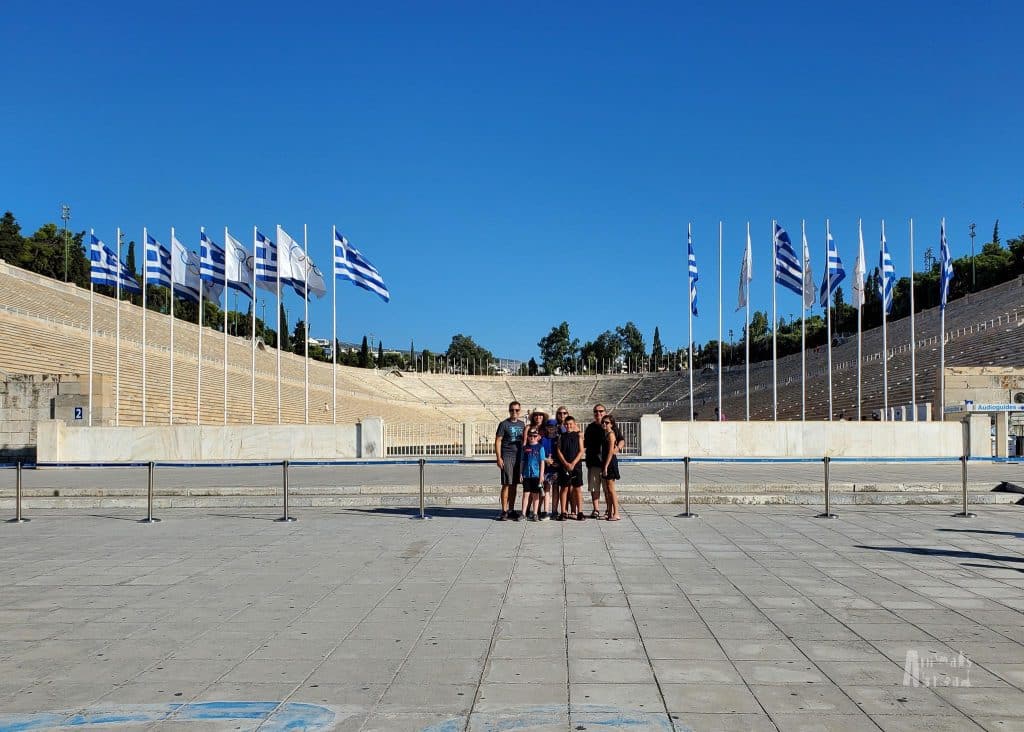
Evening in the Plaka
After some rest, we headed out again to explore the Plaka, a charming pedestrian neighbourhood with shops, cafes, and cobblestone streets glowing under string lights.
This was one of our favourite ways to wind down each day—wandering past the glowing monuments, browsing souvenir stalls, and people-watching from a quiet patio.
Sweet Tip: Don’t miss loukoumades—a favourite Greek treat. Visit Lukumades Greek Dessert to try the traditional honey-cinnamon donuts, or be adventurous with flavours and fillings.
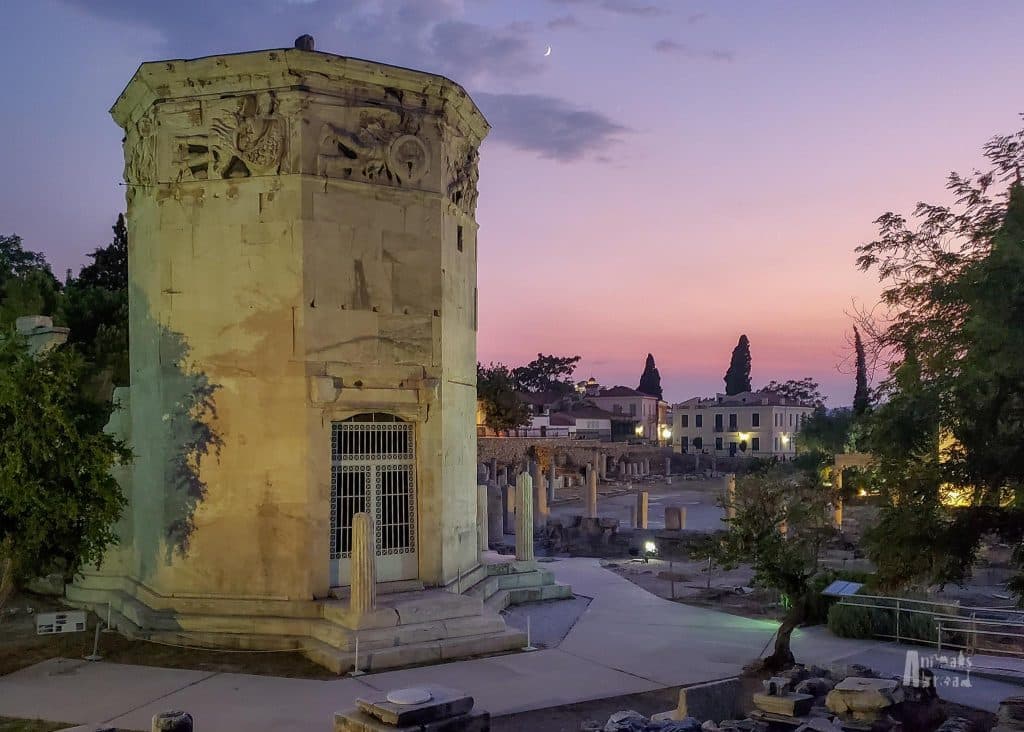
Day 3: Acropolis & Acropolis Museum
The Acropolis
No visit to Athens is complete without a trip to the Acropolis, a symbol of ancient Greek power and the Parthenon, a temple dedicated to Athena, the goddess of wisdom and war.
We climbed the hill early, beating the heat and crowds. Following the footsteps of ancient Athenians as we walked up the hill and steps to the top of the Acropolis was thrilling, imagining what these ancient ruins would have been like thousands of years ago. As we walked past ancient columns and weathered stones, the boys shared facts they had learned from their books.
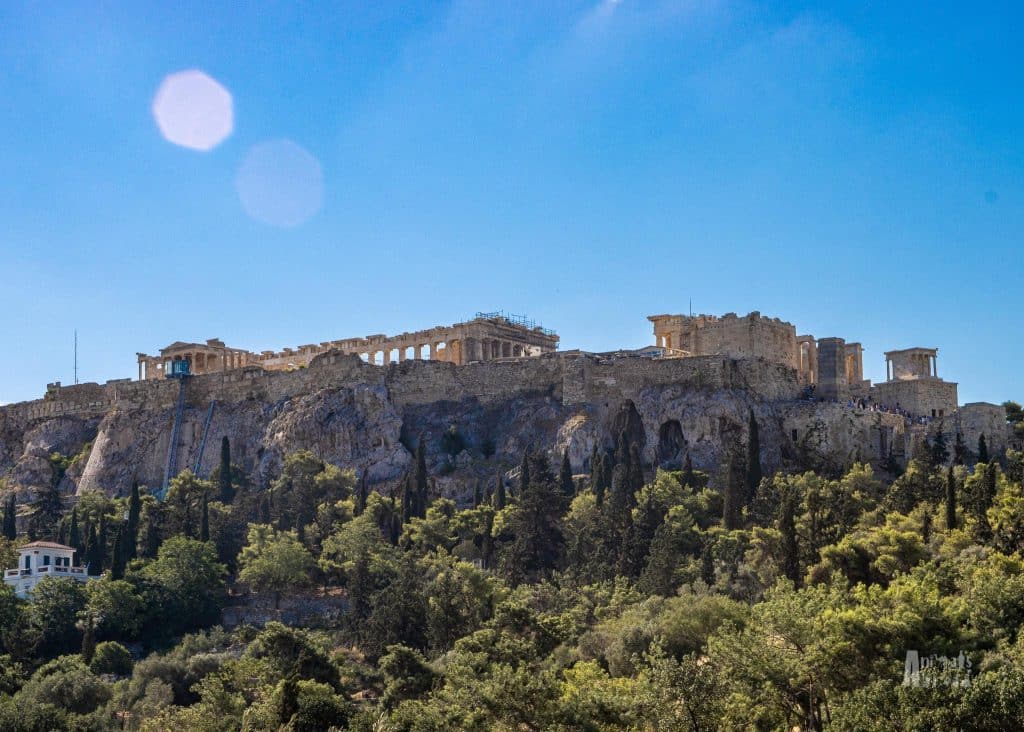
Additional Highlights
The Erechtheion, with its iconic Porch of the Caryatids (female statues in place of columns).
The Modern flag pole, commemorating Greece’s act of resistance during World War II, when the Nazi flag was removed from the Acropolis and replaced with the Greek flag.
The panoramic views over Athens from the top.
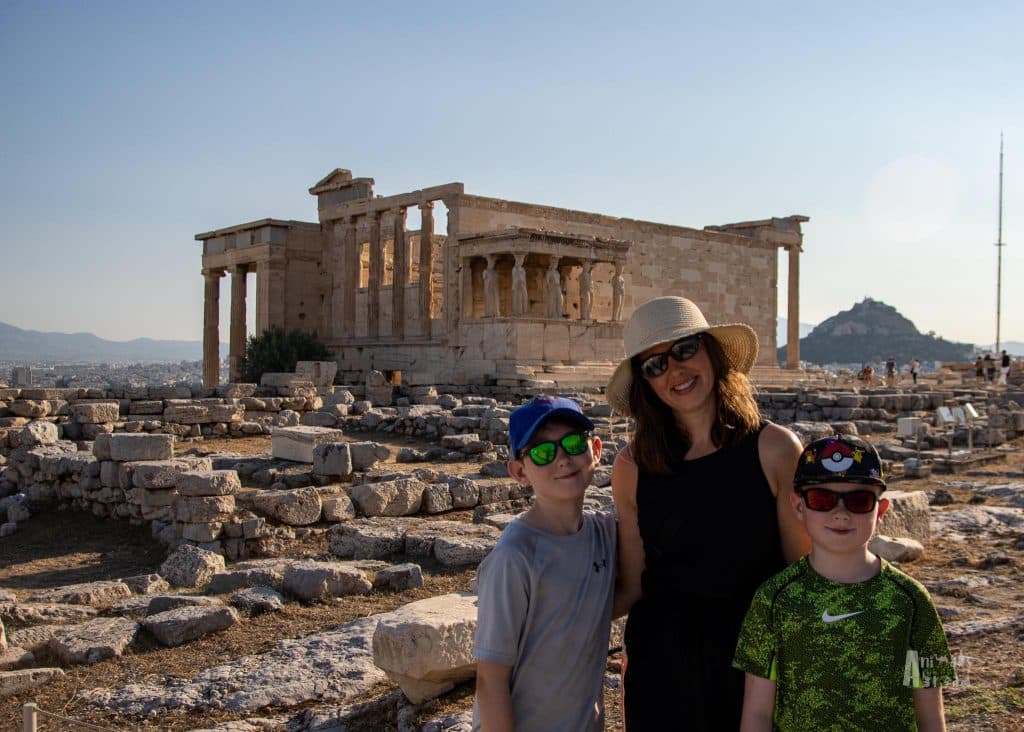
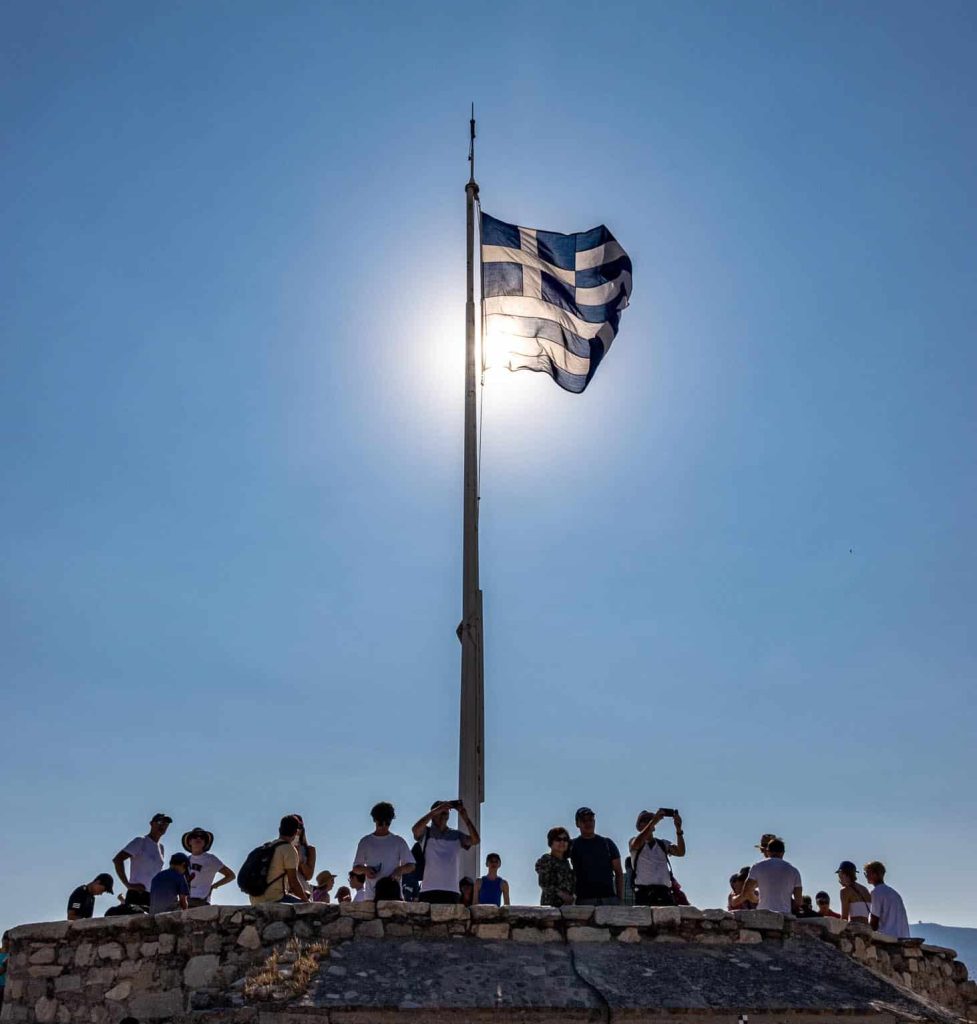
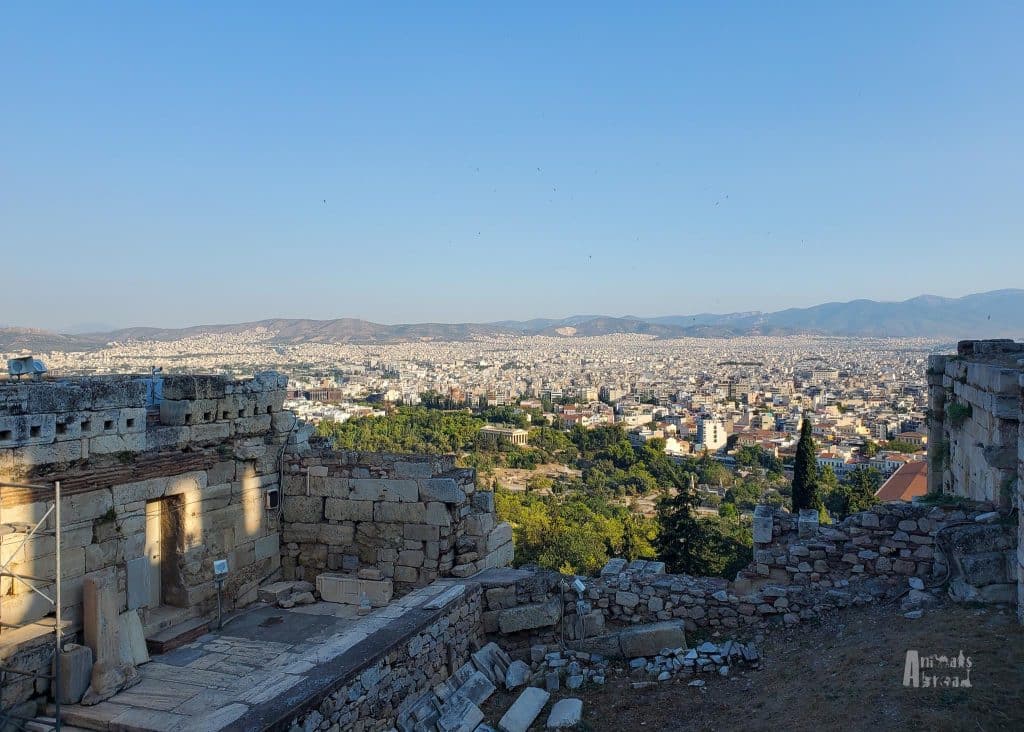
Tips to Visit the Acropolis with Kids
Arrive early or late: The Acropolis opens from 8 am to 8 pm. If you plan a morning visit, aim to be one of the first up the hill to avoid the heat and summer crowds.
Tickets: Tickets are available online or at the base of the Acropolis. The ticket booth opens at 8 am. Buying online allows you to skip the ticket booth line and proceed directly to the entrance line-up, entering earlier.
Tours: The Rick Steves’ audio guide was a bit dry. If your budget allows, hire a mythological tour for the Acropolis to engage the kids more.
Time: Plan approximately 2 hours for a visit. By the time we left at 10:00 a.m., the crowds had doubled.
Wear hats and good shoes: The climb is rocky and steep, and there’s no shade once you’re up there.
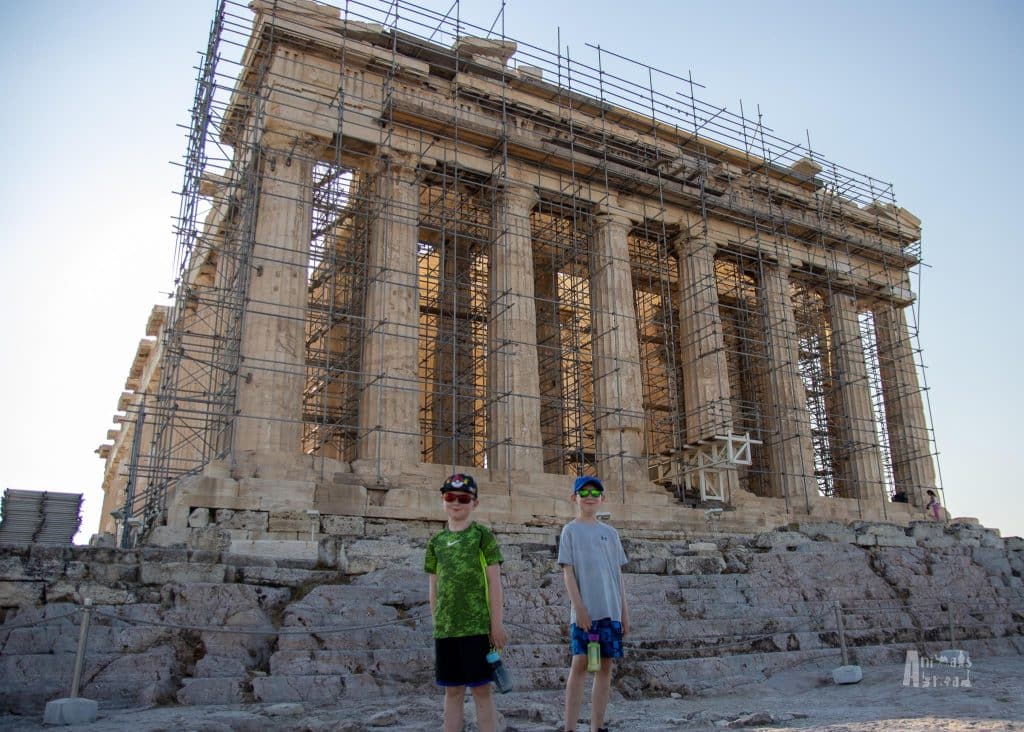
Acropolis Museum
The museum at the base of the hill houses sculptures, tools, and everyday objects found on the Acropolis. It’s bright, easy to explore with kids, and air conditioned for those hot afternoons.
We let the boys roam a bit on their own and report back with what they found interesting—a great way to keep them engaged and give them some freedom. Their favourites? The life-size statues of Greek gods and mythological creatures.
Time: Plan for about 1–1.5 hours. Note: Bags must be checked at the entrance
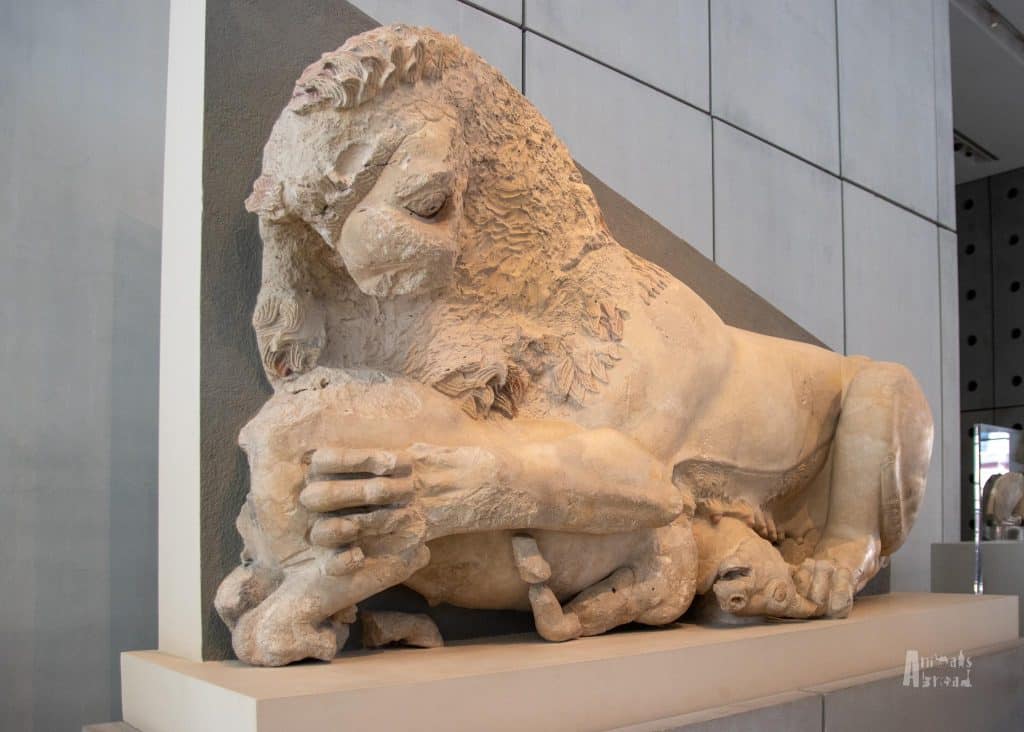
Evening Fish Foot Massages
After three days of walking, we decided to try something a little silly and fun—a fish spa! At the Fish Doctor in the Plaka, we let tiny fish nibble the dead skin from our feet. It felt ticklish and weird, but the kids loved it, and our feet felt smooth and refreshed afterward.
We wrapped up our final night in Athens with one more round of Lukumades, souvenir shopping, and dinner under the glowing Acropolis.

Is the Athens Combo Ticket Worth It?
The combo ticket provides a single entry to several ancient sites over a five-day period. It’s worth it if you plan to visit the Acropolis and at least two other included sites.
Valid at: Acropolis, Ancient Agora, Temple of Zeus, Hadrian’s Library, and more. *Doesn’t include the Acropolis Museum
There’s no child discount for the combo, so price it out based on your itinerary.
The combo ticket is available online or at any sites included in the combo ticket. If you are starting at the Acropolis, buy your ticket ahead of time to avoid the line-up.
Where to Stay
We booked an Airbnb about a 10–15-minute walk from the Plaka, and it was ideal for our family. The spacious unit featured a full kitchen, laundry facilities, and a wrap-around patio with a stunning view of the Acropolis—perfect for enjoying morning tea or winding down at night.
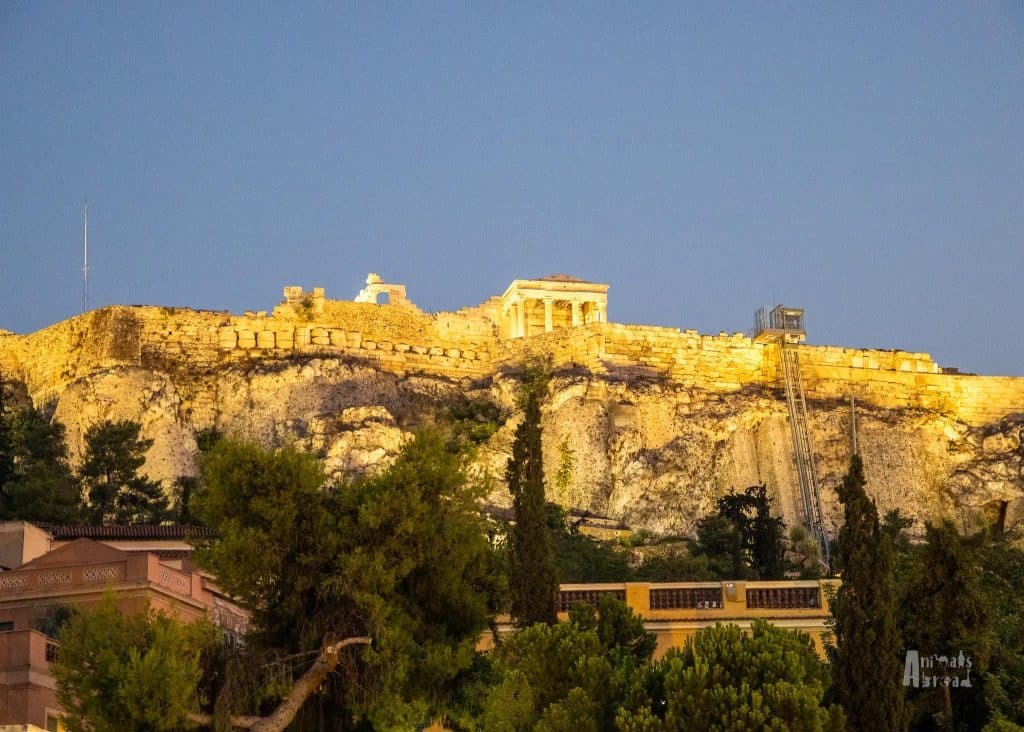
Tips for Visiting Athens with Kids
Beat the heat: Plan sightseeing for early morning or late afternoon. Use midday for downtime—swimming, relaxing, or enjoying a long lunch indoors.
Stay central: Accommodations in or near the Plaka makes it easy to walk to major sites and return for breaks.
Engage kids with mythology: Books like Percy Jackson or short videos about the gods can really enhance their interest before and during the trip.
Use audio guides or myth-based tours: Many ruins are, well… ruins. A guide helps bring them to life. Mythology tours are especially great for kids.
Wear sturdy shoes: Even in the city, paths are uneven, rocky, and often slippery with marble.
Bring water and sun protection: Shade is limited at many ancient sites—hats, sunscreen, and refillable water bottles are essential.
Try local treats: Lukumades, souvlaki, and gyros are kid-pleasers, available everywhere, and easy to eat on the go.
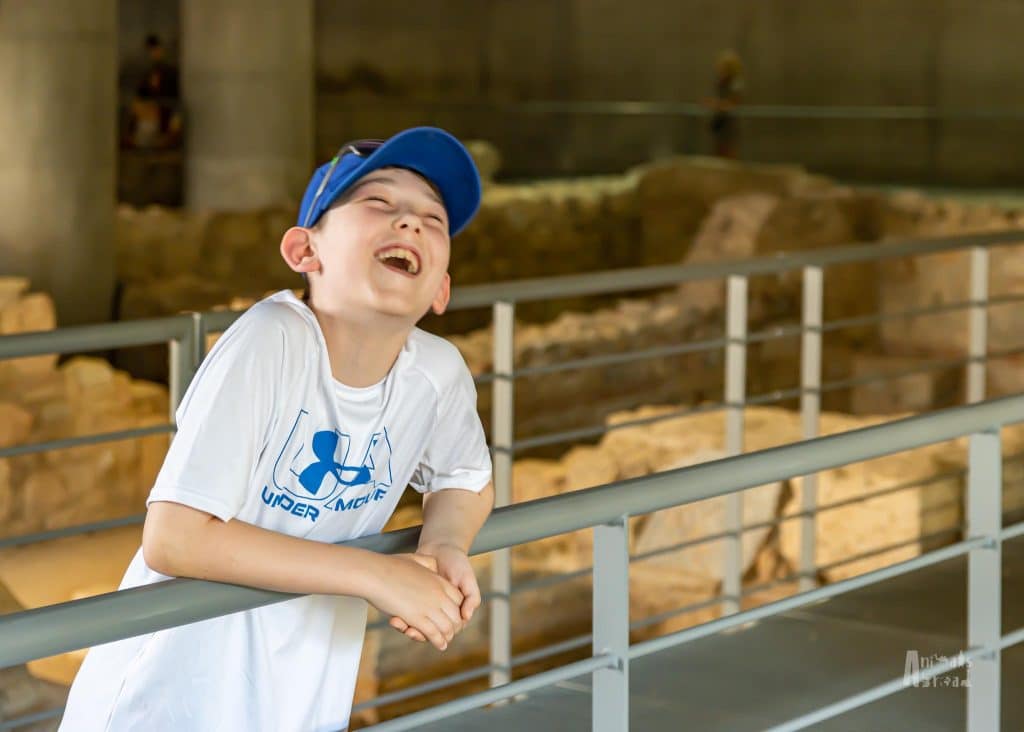
A City of Myths and Memories
While some travellers treat Athens as a gateway to the Greek Islands, we found it to be a destination worth lingering in. The ancient ruins are impressive, the mythology brings history to life, and the Plaka’s evening buzz adds a whole new charm. For families, Athens invites kids to step into the past, blending fun with history and legends.
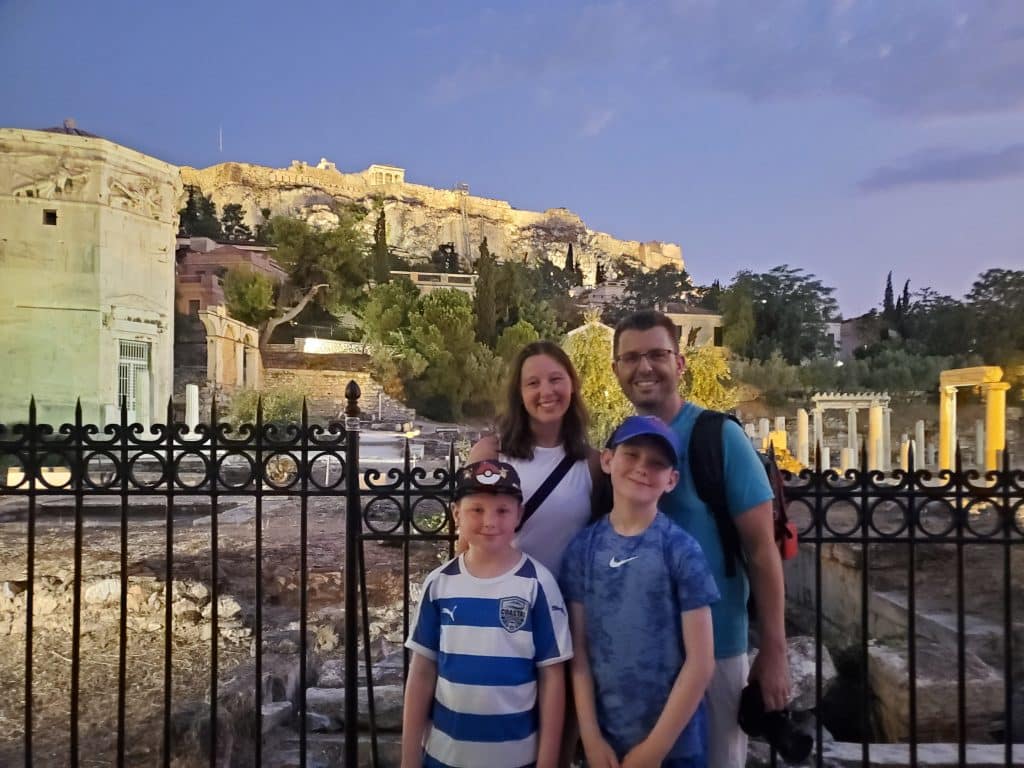
Ready to Explore Greece?
Check out these related posts to help plan your trip:
- Getting Into Greek Mythology: Visiting Poseidon’s Temple
- From Greece to Italy by Ferry: What It’s Really Like
- Navigating Greek Island Ferries: Know Before You Go
- Fun Things to Do in Naxos with Kids

